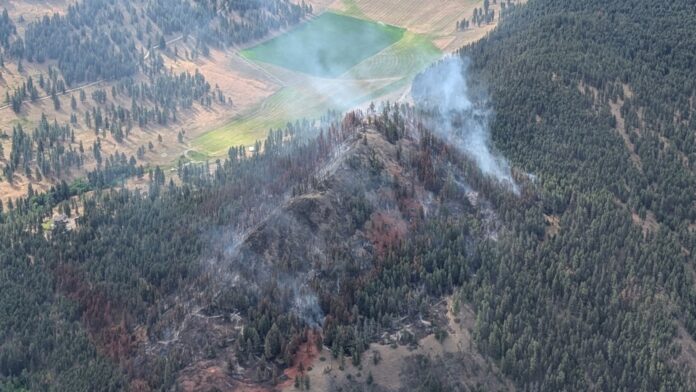British Columbia’s water, land and resource stewardship minister is encouraging residents to conserve water, saying drought is worsening in parts of the province.
Randene Neill said Monday that drought conditions in the northeast have improved thanks to recent rainfall, particularly in the Fort Nelson basin.
But, she noted some areas are seeing increased drought and declining streamflows this year, including a swathe of the Southern Interior.
Neill said all British Columbians should take steps to conserve water – no matter how small. She said the province prefers to encourage voluntary water conservation and education, and wants to avoid mandatory water restrictions unless necessary.
“We know that when we ask people…because they know it’s the right thing to do to help prevent water scarcity in the summer, that they will continue to do it. If they’re forced to do it, they don’t want to do it,” Neill said.
Dave Campbell, head of B.C.’s River Forecast Centre, said drought conditions are overall looking worse this year compared to last year, when the province saw cooler spring temperatures and a more gradual snowpack melt.
Campbell said B.C. started this year with a relatively low snowpack and it melted quickly, ending the snowy season a few weeks earlier than normal.
“What that means is that water that was available in the snowpack has moved through the systems early, and that can contribute to pressure as we move through the year,” he said.
Campbell also said most of the province has seen below normal levels of precipitation.
Meanwhile, B.C. Wildfire Service (BCWS) Director of Operations, Cliff Chapman, appeared optimistic about the wildfire situation Monday. He said firefighters have had a lot of success suppressing fires, and that’s a good sign for mid-July.
The BCWS online dashboard said Monday there have been nearly 550 fires across B.C. since April, and 477 of those have been extinguished.
More than 7000 square-kilometres have been burned so far this year, which is higher than mid-July last year.
Data provided by the BCWS on July 11th show there had been 433 fires and a little over 6,000 square-kilometres burned at the same time in 2024.
B.C. changes rating system for drought levels
The province also announced Monday that it’s changing how it defines and reports drought levels.
The province classifies drought conditions on a scale from Levels 0 to 5.
That scale will now only refer to how dry the province is, compared to the historical record. That includes precipitation and streamflow.
Previously, the drought level included measurements of water scarcity and forecasts.
Water scarcity refers to the amount of water available for human and ecological needs.
The province said the previous method of determining drought levels was oversimplified, because it reduced a range of complex factors into a single measure of drought.
It noted how the new system will help provide a broader view of the drought situation across the province and better reflect the impacts of climate change.
The changes bring B.C. in line with how the North American Drought Monitor (NADM) measures drought across Canada, the U.S. and Mexico.
The ministry said the changes mean British Columbians will see fewer Level 4 and 5 drought conditions being reported than under the previous monitoring scale.
The province has an online portal with an interactive map showing the current drought level for each region, based on the updated monitoring system.
Currently, 62 per cent of the province is at a Level 2 or 3 for drought. No areas are above a Level 3.






